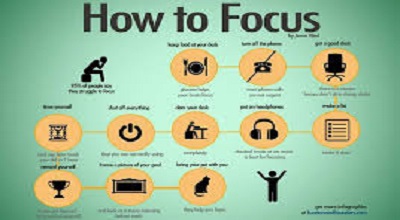3 Proven Strategies to Build Attention Stamina
3 Proven Strategies to Build Attention Stamina: In today’s fast-paced digital world, students face constant distractions that make it difficult to maintain focus in the classroom. Building attention stamina is crucial for academic success, critical thinking, and long-term learning retention. At TeacherEducator.com, we explore the latest research-backed strategies to help educators foster better concentration in students.
This comprehensive guide will cover three effective ways to enhance students’ attention stamina, along with practical tips, expert insights, and answers to common questions.
Why Is Attention Stamina Important for Students?
Attention stamina refers to the ability to sustain focus on a task for an extended period. Strong attention stamina leads to:
- Improved academic performance
- Better comprehension and retention
- Enhanced problem-solving skills
- Reduced classroom disruptions
With shrinking attention spans due to technology, educators must adopt intentional strategies to help students build this essential skill.
3 Proven Ways to Help Students Build Attention Stamina
1. Incorporate Brain Breaks and Movement
Why Movement Matters
Research shows that short, structured breaks improve focus and cognitive function. Sitting for long periods can lead to mental fatigue, reducing attention span.
How to Implement Brain Breaks?
- Use the Pomodoro Technique: 25 minutes of focused work followed by a 5-minute break.
- Incorporate Stretching or Yoga: Simple movements re-energize students.
- Interactive Activities: Quick games like “Simon Says” or “Would You Rather?”
Benefits
- Reduces restlessness
- Boosts blood flow to the brain
- Enhances engagement
Teach Mindfulness and Focus Techniques
The Power of Mindfulness
Mindfulness exercises train the brain to stay present, reducing distractions. Studies indicate that students who practice mindfulness show improved attention and emotional regulation.
Effective Mindfulness Strategies
- Guided Breathing Exercises: 2-3 minutes of deep breathing before lessons.
- Focused Listening Activities: Play a sound (e.g., a bell) and ask students to listen until it fades.
- Mindful Observation: Have students describe an object in detail to sharpen focus.
Benefits
- Lowers stress and anxiety
- Strengthens self-regulation
- Improves sustained attention
Gamify Learning to Increase Engagement
Why Gamification Works?
Games naturally capture attention by providing challenges, rewards, and instant feedback. When learning feels like play, students stay engaged longer.
Gamification Strategies
- Point Systems: Reward focused behavior with points or badges.
- Interactive Quizzes: Use platforms like Kahoot! or Quizlet Live.
- Story-Based Learning: Turn lessons into narratives where students “level up.”
Benefits
- Makes learning fun and competitive
- Encourages active participation
- Builds perseverance in tasks
Additional Tips to Strengthen Attention Stamina
- Limit Multitasking: Encourage single-tasking over divided attention.
- Create a Distraction-Free Environment: Reduce visual and auditory disruptions.
- Set Clear Goals: Break tasks into smaller, manageable steps.
- Encourage Self-Monitoring: Teach students to recognize when their focus drifts.
FAQs About Building Attention Stamina in Students
1. How long should students focus before taking a break?
Experts recommend 20-30 minutes of focused work followed by a 5-minute break for optimal retention.
2. Can technology help improve attention stamina?
Yes, apps like Focus@Will and Forest use timers and gamification to promote concentration.
3. What role does nutrition play in attention span?
A balanced diet with omega-3s, protein, and hydration supports brain function and focus.
4. How can teachers help easily distracted students?
- Provide fidget tools
- Seat them near the front
- Use visual schedules
5. Does physical activity outside class improve focus?
Absolutely! Regular exercise enhances cognitive function and attention span.
Conclusion
Helping students build attention stamina is a gradual process that requires consistency and creativity. By incorporating brain breaks, mindfulness, and gamification, educators can create an engaging learning environment that fosters deep focus.
For more teaching strategies and professional development resources, visit TeacherEducator.com.
What techniques have you found effective in your classroom? Share your thoughts in the comments!
